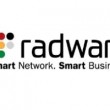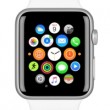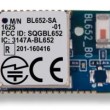

Whether it’s faster deliveries or better communication, customers’ expectations are on the rise around the world—and when it comes to the field service industry, this is no different. (more…)
February 1, 2017
Posted by: Avadhoot Patil

Radware®, a provider of cyber security and application delivery solutions ensuring the digital user experience for applications in virtual, cloud, and software-defined data centres, has found that hackers and companies agree on one thing: Data is lucrative. (more…)
January 31, 2017
Posted by: Avadhoot Patil

Today’s world of digital convergence includes not just the merging of information and communications technology into ICT; the Internet of Things (IoT) is of course also part of the mix. (more…)
Posted by: Avadhoot Patil

A new study from Juniper Research has found that while the number of high-end smartwatches is faltering, ‘smart analogue’ or hybrid watches remain largely unaffected by the market slow-down. (more…)
January 26, 2017
Posted by: Avadhoot Patil

Alpha Micro Components has begun distributing a new secure, certified Bluetooth Low Energy (BLE) v4.2 and Near Field Communication (NFC) module, the Laird BL652. (more…)
Posted by: Avadhoot Patil

According to the latest market study released by Technavio, the global Internet of Things (IoT) security market is expected to grow at a CAGR of close to 48% during the forecast period. (more…)
January 25, 2017
Posted by: Avadhoot Patil

SIMalliance, the non-profit industry association which simplifies aspects of hardware-based device security, has announced Simulity Labs Ltd as its latest strategic partner. (more…)
Posted by: Avadhoot Patil

For many people “the best service is no service,” yet getting to the nirvana of eliminating the reasons why customers call is a challenge. Today’s customer service teams are buried under manual workloads, and the volume of incoming cases is increasing, (more…)
Posted by: Avadhoot Patil

Quark IOE, a subsidiary of Guangdong Eastone Century Technology Co Ltd and Cumulocity, the Internet of Things (IoT) software platform provider, enter a strategic partnership to deliver IoT solutions in mainland China and Taiwan. (more…)
January 24, 2017
Posted by: Avadhoot Patil

Digital twins are not a new thing. Companies have been using a virtual representation of a physical asset for years, but it’s only with the Internet of Things that they’ve become truly accessible and cost-effective. (more…)
Posted by: Avadhoot Patil